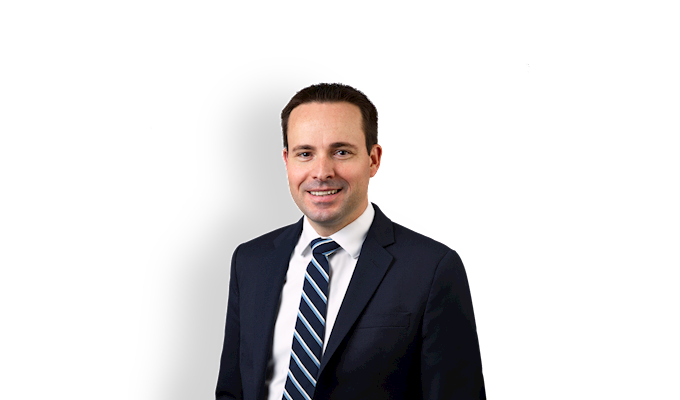When faced with IP infringement, developing a successful Canadian IP litigation strategy requires an understanding of the jurisdictional, procedural and substantive variances and nuances between the IP litigation processes in Canada and the United States.
In Canada, IP litigation is typically conducted in the Federal Court. The main reasons for this are:
- The Federal Court has the power to issue a country-wide injunction; and
- Patents, trademarks, or industrial designs can be invalidated in rem by the Federal Court.
That said, the Federal Court is a court of statutory jurisdiction. Therefore, if your IP litigation has a large component founded in breach of contract or tort, a provincial court may be better suited to litigate the claim.
Due to the Federal Court hearing the majority of IP cases, its judges generally have far more experience with IP issues than provincial court judges. Federal Court judges have varied backgrounds, some of which are technical.
Pleadings
Pleadings set out the cause(s) of action and the relief sought, as well as any defences or counterclaims. The Statement of Claim and Statement of Defence are the main pleadings together with any Counterclaim and Defence to Counterclaim. Parties can file a Reply; however, the Reply cannot raise a new cause of action. The pleadings tend to be substantive in nature and must set out all of the material facts upon which a party relies for each allegation. Law does not need to be pled, nor does the evidence. Pleadings in Canada tend to be longer and more detailed than in the United States. The pleadings form the boundaries of both discovery and the issues at trial. Therefore, sufficient detail is needed to ensure that a party knows the case they have to meet and can discover other parties in relation to that case.
Pleadings motions
Parties can bring three general types of motions that relate to Federal Court pleadings:
- Motion to Strike some or all of the pleadings. This motion is brought if a party considers that the claim discloses no reasonable cause of action or defence; the claim is scandalous, frivolous or vexatious; or the claim is otherwise an abuse of process of the court.
- Motion for Particulars of an allegation. The requested particulars must be necessary for the purposes of pleading. Otherwise, if the particulars can be obtained through the discovery process, this motion is typically not granted at this stage. Particulars are also often sought in the alternative in a motion to strike.
- Motion to Amend the pleadings. These motions are typically granted, even late in the proceeding.
Case management
If case management is requested or assigned, a Prothonotary (also known as a Case Management Judge) manages timelines to get to trial and hears most interlocutory motions. If case management is requested, it will likely be granted, and is ordered in some types of proceedings, even without a specific request. One of the benefits of case management is that, if the parties are in agreement, a joint letter or consent order can be submitted to the court, rather than full motion records, thus expediting and simplifying many of the steps.
Interlocutory injunctions
It is generally difficult to obtain an interlocutory injunction from the Federal Court in an IP case, especially if the case relates to patent infringement. One of the elements that must be proven is ‘irreparable harm not compensable by way of damages’ and the jurisprudence has set this bar extremely high. In a few recent trademark cases, the Court has recognized irreparable harm and granted the requested interlocutory injunction.
Bifurcation
The Federal Court allows parties to bifurcate a case into parts. Most often, bifurcations separate liability from quantum of damages. If bifurcation is ordered, no discovery or trial is held with respect to any of the issues bifurcated until the initial trial is complete.
Discovery
Canadian documentary discovery is more limited than in U.S. cases. All relevant documents must be produced. However, the concept of relevance is generally described as all documents that will help or hurt either your case or the other sides, thus underscoring the importance of proper pleadings. All documents that a party plans to rely on at trial must be produced. Documents can be withheld from production if they are privileged. Furthermore, documents should not be unilaterally redacted. Parties will often agree to certain types of redactions and allow counsel to review such redactions on a “counsel’s eyes only” basis if questions arise surrounding their propriety. On motion, further documents that relate to a “train of inquiry” that would help or hurt the case may be ordered. Proportionality to the size of the case is also relevant to production.
Oral discovery is also much more limited. A single representative of each party is discovered. This person is expected to answer or be able to obtain the answer to questions relevant to the pleadings. Undertakings may be given if the answer is not known at the time. Parties can answer irrelevant questions under objection. The Federal Court is trending toward preferring answers given under objection compared to refusals. However, refusals can be maintained for privilege and for plainly irrelevant fishing expeditions. The discovering party can bring a motion to compel further answers if it feels that refusals were improperly given.
A party cannot use answers from discovery of their own witness.
In addition, any inventor or other assignor can be discovered. Assignor discovery transcripts can only be used to impeach that person if they testify at trial and cannot be read in as evidence at trial. Other non-parties can only be discovered with leave of the court.
Markman hearings and summary judgment practice
Canada does not have Markman hearings per se. Summary judgment and summary trial motions tend to be much more limited. Currently, parties appear to prefer to leave almost all pleaded issues for determination at trial, at least in patent infringement actions. Summary judgment and summary trial motions are typically reserved for discrete areas of law where a decision will streamline trial, or lead to settlement. Such motions can also decide issues of construction in respect of patents.
Expert witnesses
Experts are not deposed or cross-examined before trial. A schedule is set for the exchange of expert reports before trial. Parties are encouraged to make any objections to expert reports as early as possible. Often, the parties will also agree to provide expert reports to the trial judge ahead of trial.
Leave of the court is required to call more than five experts at trial.
At trial, once tendered, the expert report is taken as read (subject to any outstanding objections). Expert evidence in chief is generally limited, usually to between one and three hours, to highlight portions of the opinion and “warm-up” the expert prior to cross-examination. Cross-examination is done live before the trial judge and is generally not subject to any time limits.
Trial
The Federal Court has a stated an objective of scheduling trial within two years of the issuance of the Statement of Claim. If a party wants a trial this quickly, it is prudent to press for case management and make this request known early in the proceeding.
Although the Federal Court aims to move proceedings to trial relatively quickly, the trials themselves tend to be longer than in the United States, although the court is trying to shorten them. Trials in Federal Court are generally limited to 25 days, absent extraordinary circumstances. Parties generally provide a schedule to the court ahead of trial, on consent, setting out when witnesses are going to appear and be cross-examined.
The decision maker in Federal Court is a judge only, not a jury.
Costs and attorney fees
A portion of attorney’s fees as well as reasonable disbursements, including for all testifying experts, are typically recoverable by the successful party.
Recoverable costs are generally determined by use of a tariff, specifying steps for which costs can be recovered as well as a range of units associated with each step, with the court determining the appropriate number of units given the circumstances of each individual case. When costs are awarded pursuant to the tariff, recovery is typically around 10 per cent of actual costs.
Recently, however, the court has tended toward awarding 25-50 per cent actual fees in big IP cases, instead of following the tariff.
The Court is currently looking to increase the amounts recoverable under the tariff by adding additional recoverable steps. The Federal Court hears immigration and admiralty matters, as well as cases against the Federal Government. Furthermore, IP litigants before it also range in size and worth. Thus, the Court often has to strike a delicate balance when making general costs determinations. Costs are awarded at the discretion of the Court.
Remedies
Permanent injunctions are often awarded in Federal Court for IP that is valid at the end of trial. Such orders are typically accompanied by orders for delivery up or destruction of infringing merchandise. Parties can also obtain orders for damages or an accounting of the infringer’s profits.
Pre-judgment and post judgment interest is often awarded. Furthermore, parties can claim punitive damages for egregious conduct. The Federal Court is a court of equity, and will consider equitable remedies under equitable principles.
Patent infringement
Remedies can only be awarded for up to six years prior to the issuance of the Statement of Claim. In addition, if infringement occurs before the patent issues, damages in the nature of a reasonable royalty can be awarded from the time the patent was published up until issuance.
Parties can also elect between damages and an accounting of the infringer’s profits. An accounting of profits is an equitable remedy. Therefore, the party must come to court with “clean hands”. Infringers also argue at this stage that their profits owing should be reduced because they could have used a non-infringing alternative.
Trademark infringement
Advertising, packaging and equipment used to make the infringing products also can be ordered to be destroyed.
Copyright infringement
Civil remedies can only be awarded for up to three years prior to the issuance of the Statement of Claim. The copyright owner can elect statutory damages instead of damages of $500 to $20,000 per infringement for commercial infringements or $100 to $5000 per infringement for non-commercial infringements and/or an accounting of profits. The court determines the amount, taking into account various factors.
Conclusion
When contemplating IP litigation in Canada, it is important to engage experienced counsel as it can vary from United States IP litigation in many important respects, whether from a jurisdictional, procedural and or substantive perspective.



